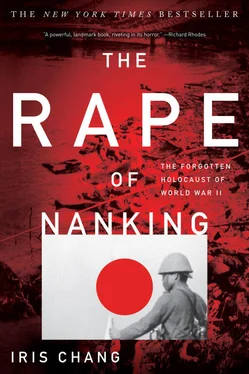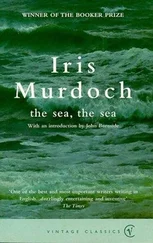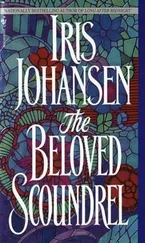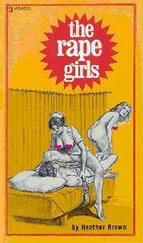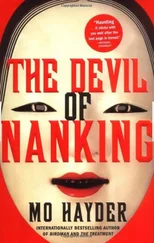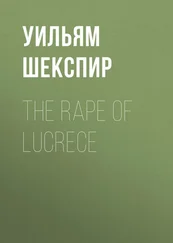When we met, neither of us had dated more than a few times, but we soon both knew we were a perfect match. We were blessed to have sixteen very happy years together. At the time of this writing, two books have been published about Iris’s life: Finding Iris Chang by Paula Kamen and The Woman Who Could Not Forget by her mother, Ying-Ying Chang. These are both good works, and I encourage those who want to learn more about Iris to read them. Iris’s life ended far too soon, and because she was a private person, much of her life and death has been shrouded in some mystery. I’m grateful to Basic Books for giving me the opportunity to fill in some of the holes and to remove some of the mystery associated with Iris’s life so her legacy and the legacy of her book can endure.
Ying-Ying Chang’s The Woman Who Could Not Forget provides a detailed description of Iris’s entire life, and I have no desire to try to improve upon that work. Instead, I’ll focus on a few key factors I believe led to her success. Both of her parents were Harvard PhDs who spent their careers doing scientific research. Thus, Iris learned to value intellectual achievement at a very early age. She spent thousands of hours as a youth at the University of Illinois library and other local libraries learning to read and process information quickly. Iris compiled an exhaustive list of all Nobel Prize–and Pulitzer Prize–winning books and Academy Award–winning films, and she proceeded to read and watch each and every one. Her days off consisted of methodically working her way through these books and films.
Iris attended the University of Illinois’s University High School, a tiny academic pressure cooker populated primarily by academically driven professors’ children who had all passed a rigorous entrance exam. The high school has produced several Nobel Prize winners and many other graduates who went on to achieve extraordinary success. In 1985, Iris was one of the few women who entered the University of Illinois Urbana-Champaign’s competitive Math and Computer Science program. She was on track to graduate in just over three years, but she changed her major to journalism when she was a few hours short of a degree. At the time, it was relatively rare for a girl to study Math and Computer Science, it was rare for someone to complete the program that quickly, and it was extremely rare for someone who had completed the program so easily to change majors at the very end.
Most would expect someone who changed majors after almost three years to be significantly behind her peers, but Iris soon made up the difference and won internships at Newsweek , the Associated Press , and the Chicago Tribune . While at the Tribune , she discovered her real passion was writing lengthy feature stories, so she applied and was admitted to the prestigious Writing Seminars program at Johns Hopkins University. While she was there, at the age of only twenty-two, she met her editor and later her agent, Susan Rabiner. Susan gave her a topic, and Iris started research on her first book, The Thread of the Silkworm .
When Iris completed her degree from Johns Hopkins, she moved to Santa Barbara, California, to live with me. Iris was always interested in film, so she took a portfolio of photos to a talent agency and was soon selected to be a dancer in an MC Hammer video. However, Iris had a MacArthur Foundation grant proposal due the very next day, so she declined their offer. We thought it was probably the first time anyone had ever turned down MC Hammer and his production company for that reason. Iris made the right decision. She won the MacArthur Foundation grant.
Iris later went on to win a National Science Foundation grant to continue her research on The Thread of the Silkworm . What was truly amazing was that Iris never completed a science degree, and she had no formal affiliation with any university or research institution.
Along with her beauty, her intelligence, and her education, two other factors contributed greatly to Iris’s success. She was never shy about asking someone, no matter how famous, for help or advice, and she was always trying to improve herself. For instance, in 1991 Iris was very nervous about the prospect of giving a short toast in front of two hundred people at our wedding reception. Yet she consciously worked at public speaking so that by the time The Rape of Nanking was published in 1997, she could hold the attention of a thousand people for an hour or longer while she talked about her research and her books.
During the first ten years of our relationship, it was a true pleasure to watch Iris build herself from a sometimes shy and introverted person into “Super Iris,” the famous author and historian who could write best-selling books, keep audiences enthralled with her speeches, and win debates on national television. It was much sadder to see “Super Iris” rapidly succumb to mental illness during the summer of 2004.
There remain a number of myths and misunderstandings about the life and career of Iris Chang. Even I still have a few questions of my own. I can, however, offer information that I think will offer clarity to readers of this book. The first misunderstanding has to do with whether there was a “Eureka! Moment.” Iris attended a conference in Cupertino, California, late in 1994 where she saw photos from the Rape of Nanking. There is a common myth that Iris saw the photos and decided then and there that she had to write a book on the atrocity. This is a nice story, but it is entirely contrary to the way Iris did her work. Iris maintained a meticulous file of book ideas, which grew to 400 potential projects by 2004. Iris had heard stories about the Rape of Nanking as a child from her parents and grandparents. She told me shortly after we started dating in October 1988 of her desire to write a book about the Nanking massacre. As soon as she completed the final draft of her first book The Thread of the Silkworm , she determined that Japan’s assault on Nanking was the most promising topic for her second book, and so she started research. A month later, in the fall of 1994, she attended the conference in Cupertino where she met with the group of activists who sponsored it. She saw many photographs of victims, and she became acquainted with many people who were to become extremely helpful to her in her research. Yet, somehow the idea got started that looking at the photographs at the conference gave her the inspiration to write the book, and that myth has continued to grow. Iris never made an impulsive career decision like that. Writing The Rape of Nanking was something she had planned for years, and she was researching the book already when she attended the conference.
Another myth is that the subject matter of The Rape of Nanking and the Bataan Death March led to her breakdown and her death. Iris completed The Rape of Nanking in early 1997 but never showed any real signs of mental illness until 2004. While she was researching The Rape of Nanking and the Bataan Death March, she read through an enormous amount of information. She provided almost daily updates of her progress to me, and she also discussed the material with her parents and several close friends. My impression was that rather than upsetting her, seeing the photos and reading the material energized her and drove her to do the best job she could to tell the stories. She expressed sadness that the people of Nanking who suffered so much in 1937 and 1938 were still living in severe poverty sixty years later. She developed a close attachment to many Bataan Death March veterans who suffered at the hands of the Japanese from 1942 through 1945. Many of those Bataan veterans were small-town Midwestern boys like me and many of her childhood friends, so she identified closely with them. Most were in their mid-eighties by that time, and by 2004, many had passed away or were diagnosed with terminal illnesses. The only time I saw Iris break down and cry on a work-related issue was when she heard that one of the Bataan veterans she befriended had passed away.
Читать дальше
